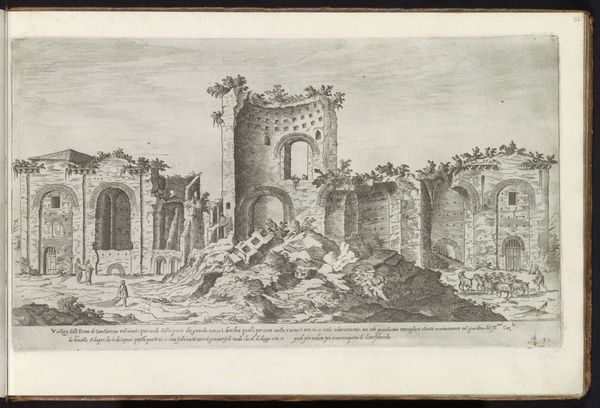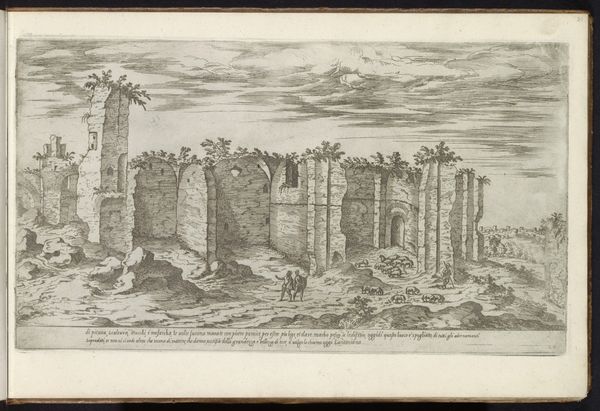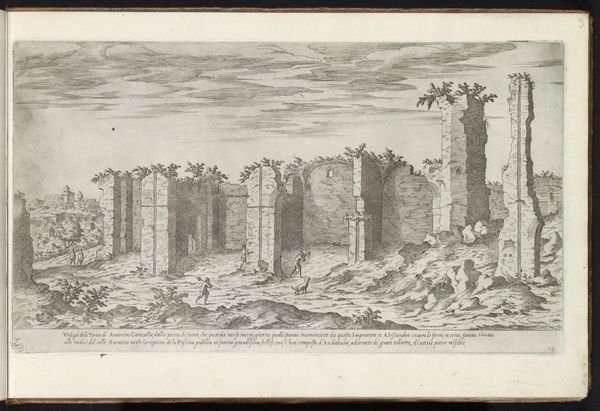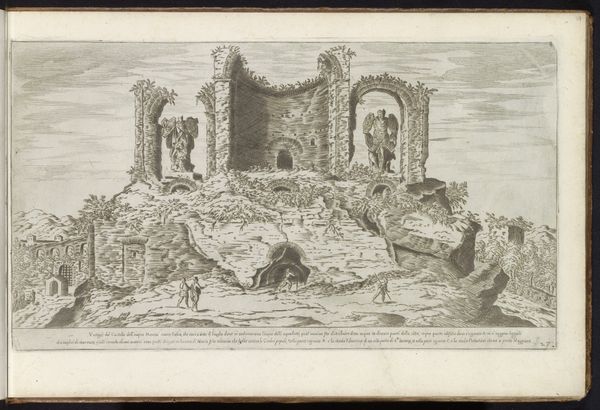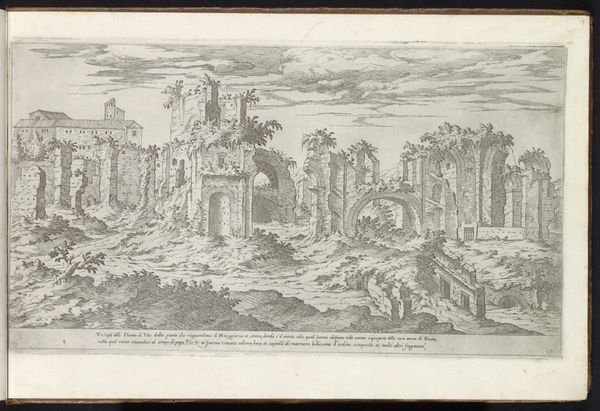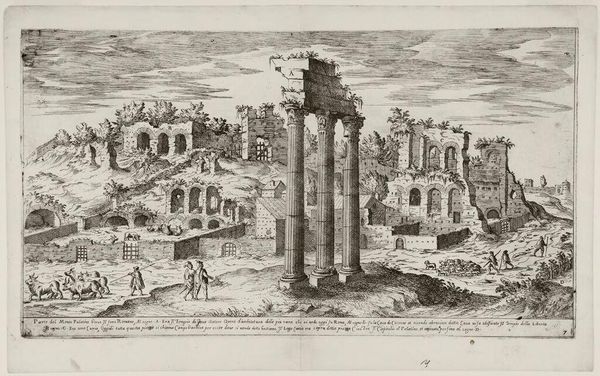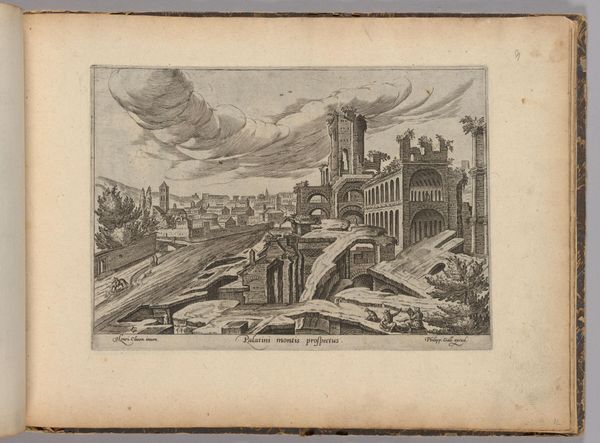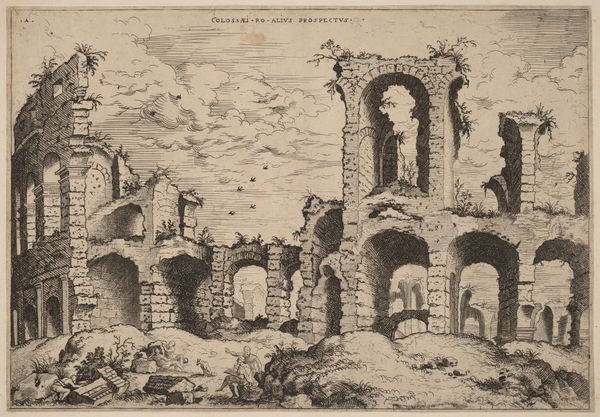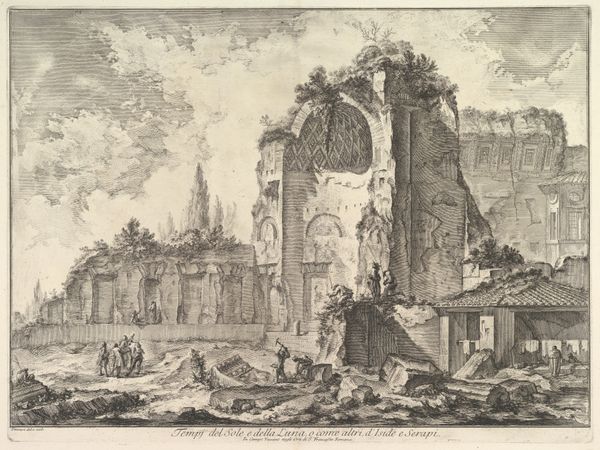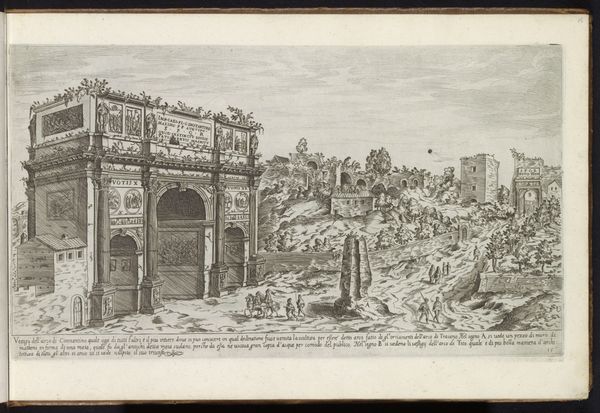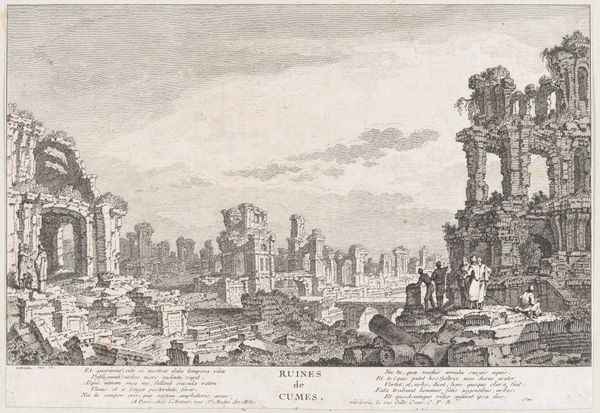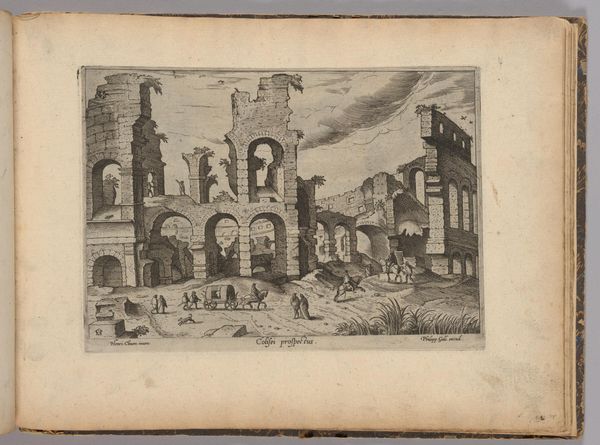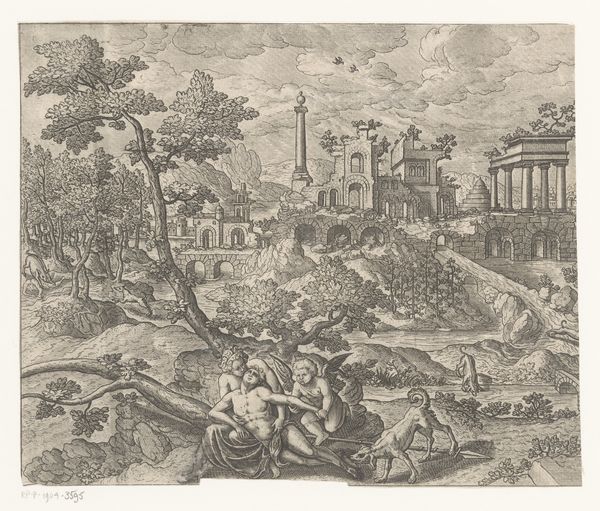
Dimensions: height 215 mm, width 381 mm
Copyright: Rijks Museum: Open Domain
Editor: Here we have Étienne Dupérac's "Palatijn te Rome" from 1575, created using ink and engraving on paper. The sheer detail in this print is incredible. The ruined columns and architecture give a sense of both grandeur and decay. What strikes you most about its visual structure? Curator: Indeed. The composition leverages a compelling interplay between the ordered geometry of classical architecture and the encroaching organic forms of nature. Note how the verticality of the columns, though fragmented, imposes a structured foreground. Consider then, the meticulous arrangement of light and shadow, meticulously rendered through the hatching and cross-hatching of the engraving technique. Editor: It's almost a contrast between precision and chaos. The clean lines of the remaining architecture are juxtaposed with the decaying ruins being overtaken by foliage. Is this a conscious theme, do you think? Curator: Precisely! The geometric forms of the buildings offer a sharp contrast to the amorphous shapes of the landscape. One may read the ruins as visual representations of entropy. However, I encourage you to contemplate the stability implied by what remains; how form itself suggests an immutable essence. Do you perceive a clear focal point, structurally speaking? Editor: I think the central columns are a strong focal point due to their size and position. This guides the eye. Looking closely at Dupérac's skillful use of lines does add depth and structure to the scene. I appreciate noticing how the forms interrelate. Curator: Indeed. The careful arrangements contribute to the artwork’s semiotic complexity, inviting reflection on its structured beauty. Editor: Thank you for your perspectives. I have a greater insight into the form within.
Comments
No comments
Be the first to comment and join the conversation on the ultimate creative platform.
